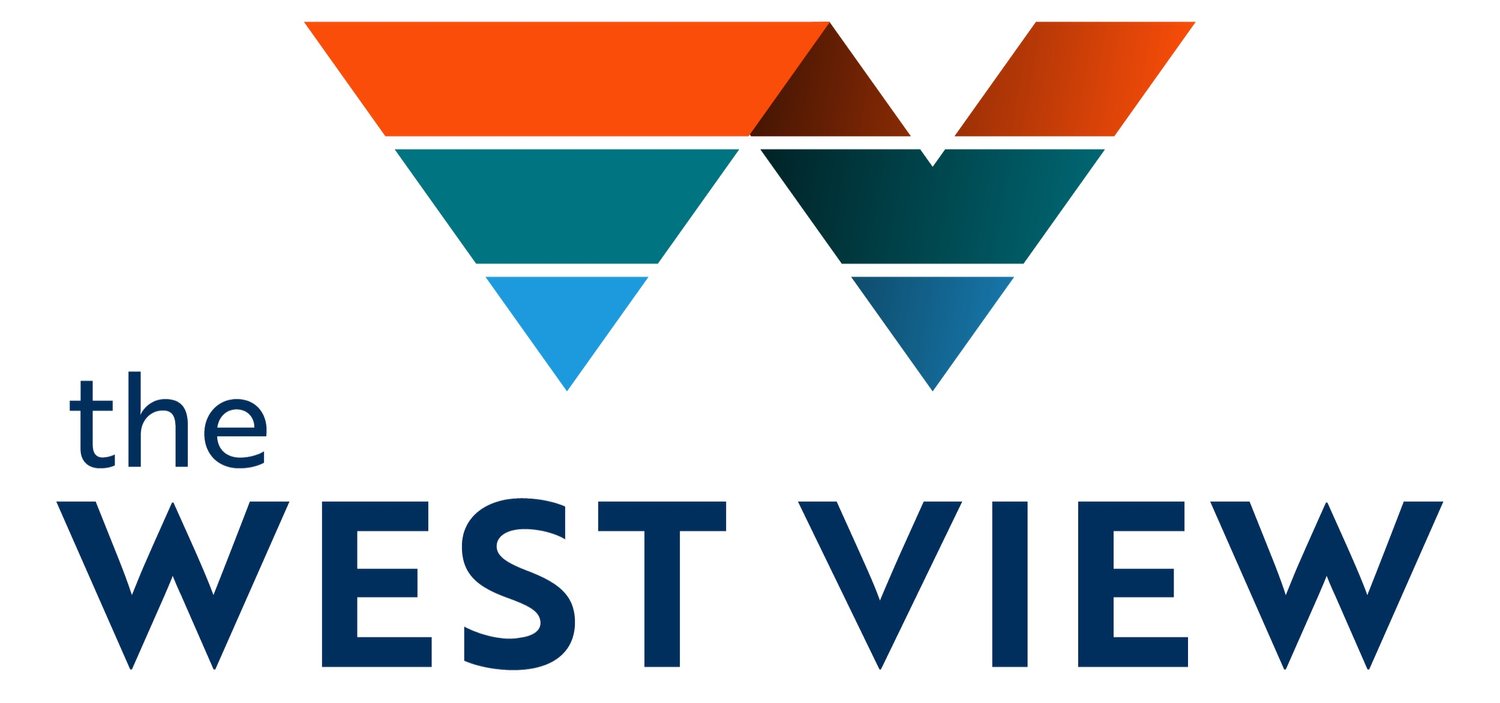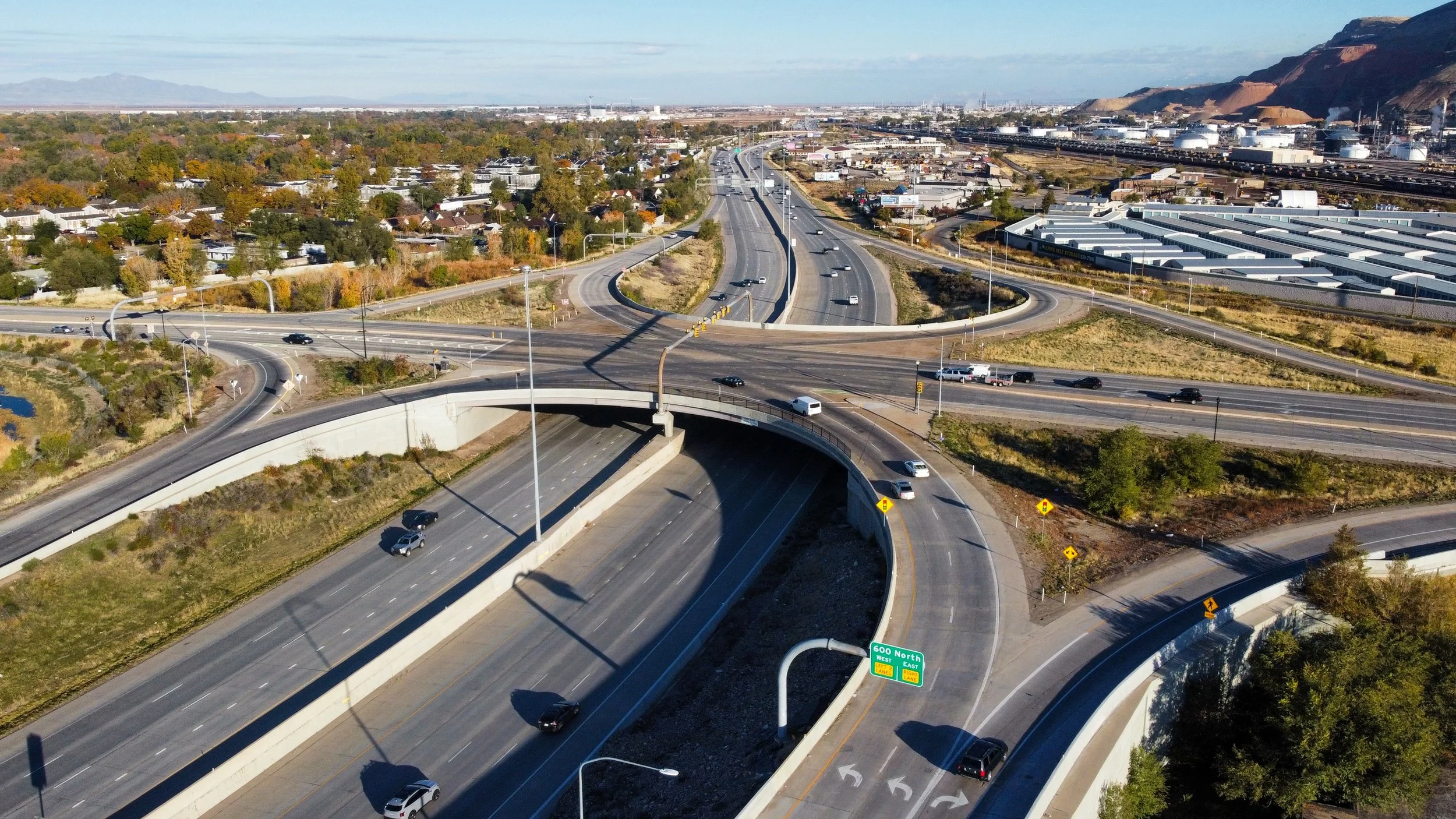Proposed cost of I-15 expansion more than doubles to $3.7 billion, Westside opposition remains strong
As part of the I-15 expansion, the 600 North interchange will be rebuilt from a SPUI design to a “tight diamond” design. UDOT says this will be safer for pedestrians, cyclists, and commuters. Photo by Elisabeth Cupp.
The newest proposal for expanding the I-15 in Salt Lake City and Davis County has more than doubled in cost – from $1.6 billion in the Spring 2023 proposal to $3.7 billion in the Draft Environmental Impact Statement released in Fall 2023.
Representatives from the Utah Department of Transportation (UDOT) and the Wasatch Front Regional Council (WFRC) were on-hand at a recent Open House and Public Hearing held at the Utah State Fairpark. When asked about the huge rise in expected costs, UDOT representatives said the original estimate was from several years ago. Jory Johner with WFRC clarified that the additional cost could also be due to the scope of the project expanding; instead of just adding more lanes, the proposal calls for rebuilding and adding several interchanges along the nearly 20-mile long corridor, as well as adding new shared use paths.
Representatives from both organizations blamed inflation as well, saying that in just the last few years, the cost of materials and labor have far exceeded the original estimates. This new cost has additional padding to account for future inflation, though that’s a difficult thing to plan for, warned Kevin Kilpatrick, an environmental consultant assisting UDOT with this project.
The Utah State Legislature earmarked $1.6 billion for the project; where the difference in cost will come from has yet to be decided. Kilpatrick said the project could be implemented in a phased approach, similarly to how I-15 in Utah County was expanded in the 2010s. But as of now, the project is only partially funded.
Draft EIS Statement Released
In late September 2023, UDOT released their updated Draft Environmental Impact Statement. In it, they narrow in on a few key points for the upcoming expansion project.
The proposal now calls for five general purpose lanes in each direction, along with a single express (HOT) lane to be used by carpoolers or toll-payers. This means that from 400 South in Salt Lake City to Shepherd Lane in Farmington, I-15 will be 12 lanes wide.
Next Steps
Those interested in leaving their own public comment on the Preferred Alternatives in the Draft EIS have until Monday, November 13th. Comments can be left online on the DEIS Comment Map (available in both English and Spanish), emailed to i15eis@utah.gov, or mailed to 392 E Winchester St., Ste. 300, Salt Lake City, UT 84107.
After November 13th, UDOT will go through all of the comments, and may make additional changes to the plans based on that feedback. The Final Environmental Impact Statement would then be released sometime in the Spring of 2024. Once the entire scope of the project has been finalized and budget secured, UDOT will release a more accurate timeline for construction.
For most of the route, this means adding one new lane in each direction. However, between 400 South and I-215, it means adding two new lanes in each direction. Tiffany Pocock, project manager with UDOT, said adding those two lanes will “bring the freeway to a consistent corridor.”
In addition to widening the freeway, UDOT is proposing adding or rebuilding several interchanges throughout the area. The 600 North interchange will be redesigned with bicycles and pedestrians in mind, meaning there would be designated crossings and forced stopping of vehicles exiting the freeway – no more yielding onto 600 North from the off-ramp. The current plan could change as well, depending on what Salt Lake City decides to do as part of their 600/700 North traffic calming study.
UDOT’s proposal also calls for a completely rebuilt interchange at 1000 North. There are currently two proposed routes for the 1000 North interchange; UDOT says they prefer the “north” option, which would result in the demolition of the Salt City Inn in Rose Park. That option would construct a full access interchange just south of the existing 900 West overpass. It would also result in an additional partial exit from the northbound lanes of the freeway to Warm Springs Road. UDOT says they hope this would take truck traffic off 600 North, making it safer for pedestrians, cyclists, and commuters.
When asked why UDOT prefers the “north” option over the alternative options, Kilpatrick said it came down to two things: a better ability to slow traffic exiting I-15 onto 1000 North – through the use of road curves – and the additional exit lanes for truck traffic onto Warm Springs Road.
The 2100 North interchange would be completely redone, being designed largely for truck traffic. It would include a new grade-separated roadway over the railroad tracks, linking I-15 to Beck Street. UDOT hopes this new access point would further help to relieve semi truck congestion on 600 North.
UDOT is also proposing a new I-215/I-15 service interchange. That interchange would allow drivers heading northbound on I-15 to exit onto I-215, and would allow those traveling north/east on I-215 to head south on I-15. That new interchange would also contain access to US-89. The existing ramps from northbound I-215 to northbound I-15 would remain in their same location.
One point of contention among those living in the Guadalupe neighborhood is the proposal to add another crossing under I-15 between North Temple and 600 North. In addition to those two streets, the only other I-15 crossing in that area is 300 North. However, due to fierce opposition from those living in that area, UDOT has decided to remove the crossing proposal from this specific project.
The plan to add another crossing will continue to move forward, but will be handled through separate discussions with Salt Lake City leaders. At a Q&A session, UDOT representatives said they still want to build another freeway crossing of some kind in the area, but clarified that the crossing did not need to be for cars; it could be something as simple as a greenway or pedestrian path.
Construction Effects
As in their May 2023 draft EIS, UDOT is not proposing taking any homes in Salt Lake City as part of this project. Instead, they say they’ll add the new lanes to the existing median, building inwards rather than outwards. However, this doesn’t mean homes near the project won’t be affected; 24 homes on the east side of the freeway – mainly on Hodges Lane and Argyle Court – have been marked as “potential relocations.”
Pocock explained the label during a virtual open house, saying, “These are instances where we can construct the preferred alternative without relocating a business or homeowner. But because of the potential impact, there may be a desire on the part of the homeowner or business owner to be relocated.” She explained that each property owner labeled a “potential relocation” will be contacted by UDOT, and each situation will be dealt with on a case-by-case basis.
24 homes on the east side of I-15 – along Hodges Lane and Argyle Court – have been marked as “potential relocations” in the most recent Draft EIS. Rather than outright demolish the homes (shown on the left side of this photo), UDOT says they will minimize impact by expanding the freeway into the median instead. Photo by Elisabeth Cupp.
UDOT says construction would not begin until 2026 at the earliest. Once construction begins, they anticipate it would take 3.5 to 5 years to complete the entire length. That does not mean, however, that the entire route would be under construction for the full time.
As for actual hours of construction, UDOT says that would largely be up to the actual contractor doing the construction. They have to balance traffic flow during the day while trying to minimize noise impacts to residents during the night. For the most part, they don’t anticipate construction near homes lasting late into the night, but could do late-night construction near the refineries instead.
Community Opposition Remains Strong
Even while UDOT makes concessions and modifies their plans for I-15, community opposition to the expansion remains strong; this is especially true for those living near the freeway in Salt Lake City.
At an official Public Hearing session at the Utah State Fairpark, several area residents took to the microphones to express their anger at the entire project. Lucy Cardenas, owner of Red Iguana in the Fairpark neighborhood, said the plan was a mistake. “I am 100% opposed to expanding the I-15,” she said. Cardenas was more in favor of expanding and improving transit options instead, saying that “it’s a matter of reeducating our people to not depend on cars so much.”
In what has become a common sight at various public venues, UDOT representatives listen to comments and questions at a Q&A session held at the Marmalade Library.
Fairpark resident Michelle Watts also spoke, saying FrontRunner should be double-tracked and the West Davis Corridor – with connection to Legacy Parkway – should be completed before UDOT moves forward with any plans to further expand I-15. “Billions of dollars spent on this is just ridiculous,” she said.
Chaise and Taylor Warr, residents of the Guadalupe neighborhood, questioned if their comments would actually do anything in the long-run. They spoke on behalf of their neighbors, many of whom feel like UDOT has not listened to their concerns. Both said they believe UDOT has already made their decision, rendering moot any new public comments. “It’s a big slap in the face,” Chaise Warr said in his public comment. Maria Garcias, another resident in Guadalupe, echoed those sentiments, saying community members feel their comments have no value.
In many of the meetings held to discuss the I-15 EIS, several residents have brought up the theory of induced demand, which says that adding additional lanes of traffic only invites more cars to use the road. This, in turn, negates any efforts to decrease congestion and improve speed. Each time the question was asked, UDOT representatives were largely hesitant to say anything about it, often shifting focus or giving nonanswers. One gentleman pushed the study team for more, and Pocock finally addressed his concern, saying “I know there are some notions of induced demand, but the research is not about induced demand.”
Overall, the community sentiment at the several meetings held in recent months has been against the project. Many comments left online on the draft EIS are negative, although some do offer constructive criticisms of certain elements in the design. Regardless of the public’s feelings regarding the project, UDOT maintains that the rebuild and expansion will go forward.
Next Steps
Those interested in leaving their own public comment on the Preferred Alternatives in the Draft EIS have until Monday, November 13th. Comments can be left online on the DEIS Comment Map (available in both English and Spanish), emailed to i15eis@utah.gov, or mailed to 392 E Winchester St., Ste. 300, Salt Lake City, UT 84107.
After November 13th, UDOT will go through all of the comments, and may make additional changes to the plans based on that feedback. The Final Environmental Impact Statement would then be released sometime in the Spring of 2024. Once the entire scope of the project has been finalized and budget secured, UDOT will release a more accurate timeline for construction.



